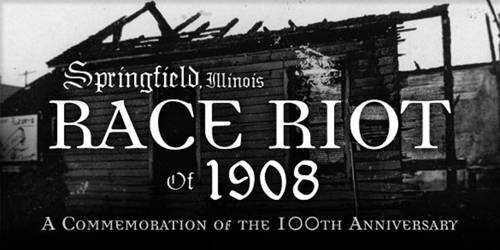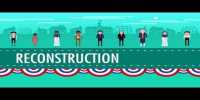The Springfield Race Riot of 1908 were against African Americans between August 18 and 16, 1908, in Springfield, Illinois. There were incidents of mass racial violence by about 5,000 white Americans and European immigrants in Springfield, Illinois. It involved two blacks arrested as suspects in rape, and attempted rape and murder. Driven by the transfer (later withdrawn) of a black prisoner accused of rape, the riot was a sign of similar racial fears in the north and south alike. Almost the entire Illinois state militia was forced to quell the mob, which shot innocent people, burned homes, looted shops, and mutilated two elderly blacks. When mobs seeking to trap people were able to evacuate the sheriff from their city, whites were persuaded to invade black areas, kill black citizens on the streets, and destroy black businesses and homes. State militias were called in to quell the riots. The sheriff announced that the accused men had been evacuated to an unknown location, the people there failed to find it, the crowd became angry at two more black men in the area, Scott Burton and William Donegan. They are launched quickly.
Riots, trials, and subsequent events seem to be one of the most documented examples of the complex intersections of race, class, and criminal justice in the United States. An NPR report on the centenary of the 2008 ethnic riots said that the incident in a northern state, especially in “The Land of Lincoln”, proved that blacks were abused not only in the South but across the country and that the story of horse racing in America As described. Some Springfield blacks fought in self-defense. They fired when shot and Scott Burton, the first victim of the launch crowd, used his shotgun in an attempt to save his life and home. The second victim was an 8-year-old shoemaker named William Donegan, who was stigmatized in the eyes of the public that he had been married to a white woman for more than 30 years. A 4-page “re-survey” of the site near 10th Street said its initial assessment “found that the field of study (NAACP) gave a unique opportunity to explain the establishment as well as expand the narrative of racial violence in the twentieth century and the 1908 Springfield Race riots.” Time provides a snapshot of a diverse neighborhood as it exists. ” For decades it was mistakenly known that blacks were responsible for white deaths and that more whites died than blacks. The amount of personal and property damage caused by blacks was more than $ 150,000 (about 4 4 million in 2018), as dozens of black homes and businesses were destroyed, as well as three white-owned businesses of suspected black sympathizers.
As a result of the riots, countless blacks left Springfield, but it is not clear how many left permanently. After that, the population seemed to show no remorse and some people even supported the South’s political strategy of giving concessions as a way to “keep blacks in their place.” Near the 100th anniversary of 2008, the City of Springfield erected a historic landmark and a memorial statue. The riots were a catalyst for the formation of the National Association for the Advancement of Colored People (NAACP), an organization working to promote the civil rights of African Americans.












